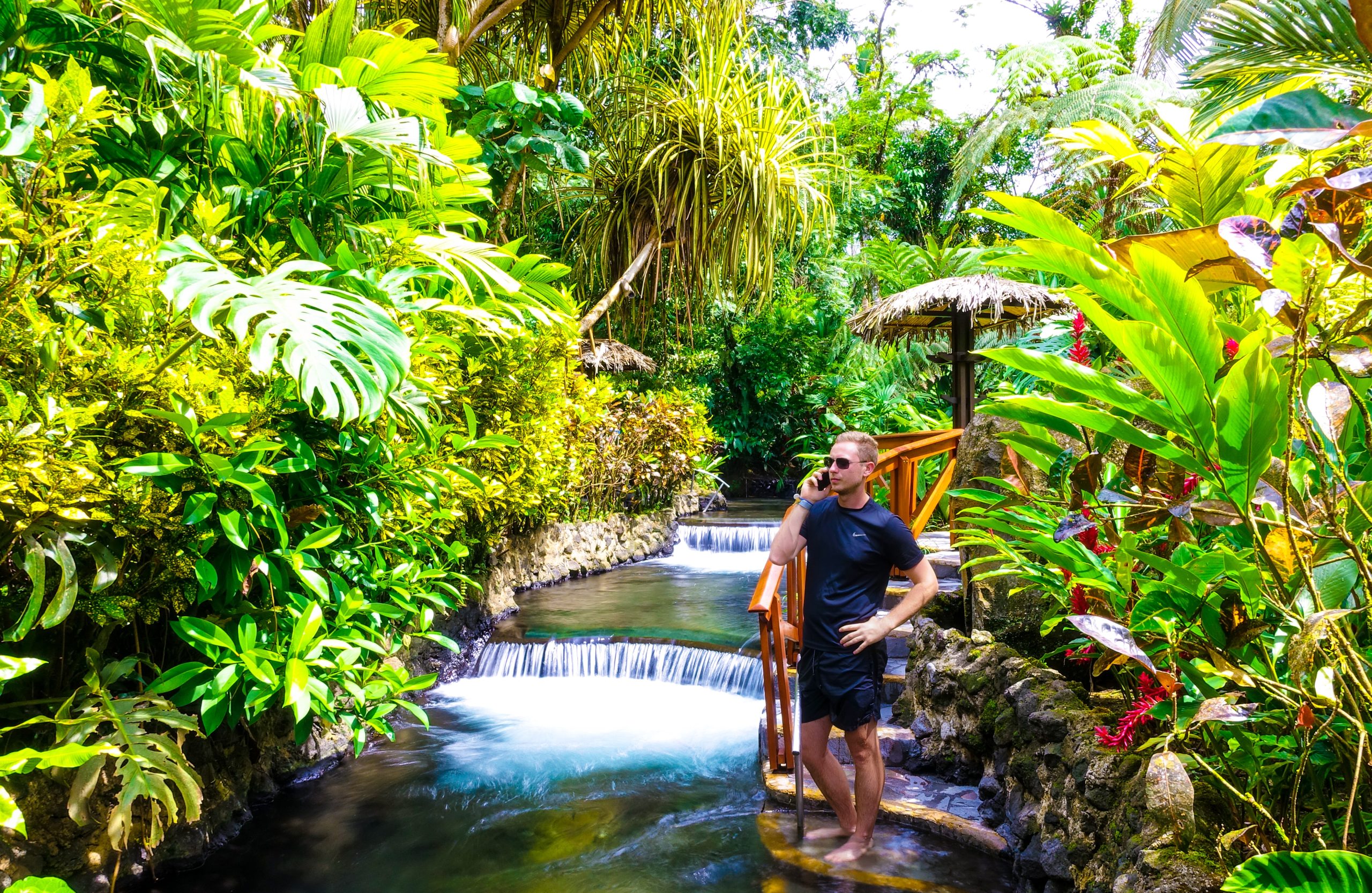With its spectacular natural beauty, friendly locals, low cost of living, quality healthcare, and laidback pace of life, Costa Rica tops many retirees’ list for the ideal destination to retire. This extensive guide will walk you through everything you need to know about retiring in Costa Rica to live out your golden years comfortably and happily.
Costa Rica offers the opportunity to reinvent your life in a beautiful country filled with adventure, lovely communities, and the pura vida mindset. Proper planning and preparation helps ensure your retirement abroad thrives. Retiring in Costa Rica allows you to enjoy nature, discover new passions, and focus on what matters most.
The affordable luxury, natural wonders, welcoming residents and relaxed pace of life will make your days genuinely pura vida when retiring in Costa Rica. With the right information and forethought, you can comfortably and safely retire in this overseas paradise. Pura vida!
[ez-toc]
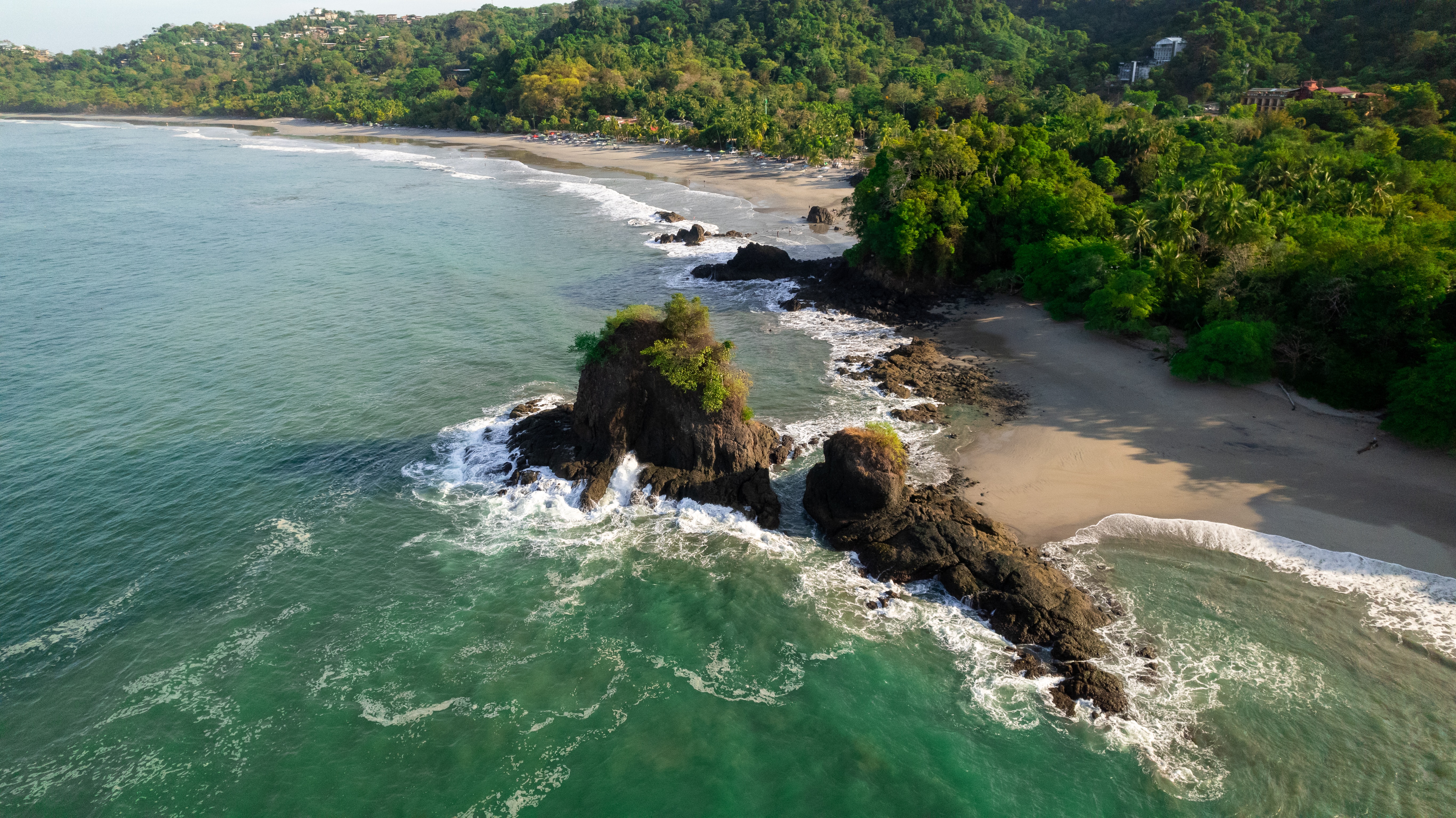
Why Choose Retiring in Costa Rica?
What draws over 100,000 North American retirees to Costa Rica? The country offers an unrivaled combination of stunning scenery, comfortable climate, thriving expat communities, offshore adventure, cultural vibrancy, and an emphasis on enjoying life that makes it perfect for relocation in retirement.
Biodiverse Beauty
Lush rainforests, stunning beaches along both the Pacific and Caribbean coasts, majestic volcanoes, and lush green mountain valleys make Costa Rica a nature lover’s dream. 25% of the country’s land mass is protected national parkland. Retirees can revel in endless wildlife viewing, bird watching, watersports, and daily encounters with extraordinary natural beauty.
Spring-Like Weather Year Round
The tropical climate stays between 70-80 degrees in most regions year round. Some coastal areas get quite humid while mountain towns offer refreshing mild temps. You’ll never deal with snowy winters or sweltering summers. Outdoor living is comfortable every single day.
Lower Cost of Living
Retirees can live quite comfortably in Costa Rica on $2,000-$3,000/month. Food, dining, utilities, transportation, healthcare and other daily costs are dramatically cheaper compared to the U.S. or Canada. Your retirement funds and pensions can stretch much farther.
Established Expat Communities
With over 115,000 North American retirees already in residence, Costa Rica offers built in community. Make new friends, join clubs, participate in group activities, access services in English, and obtain referrals from fellow expats who have already navigated the transition abroad.
To read a comprehensive guide on retirement in Costa Rica for US citizens, click here
High Quality Healthcare
See an English speaking doctor for just $50. Get major surgery for $25,000 instead of $150,000 in the U.S. Costa Rica’s excellent healthcare system helps retirement savings go even further. No health issues are pre-existing conditions here.
Puravida Mentality
Pura Vida translates to “pure life” and encapsulates an emphasis on enjoying each day, family, nature, and staying positive. Leave the materialism and rat race behind to instead focus on living simply, gratefully, and peacefully in an extraordinary setting.
Adventure Awaits
Need a thrill beyond the daily wonders? Go ziplining through the rainforest canopy, ride Class IV rapids, charter a deep sea fishing boat, hike active volcanoes, learn to surf, spot whales, or scuba dive. Embrace your adventurous side!
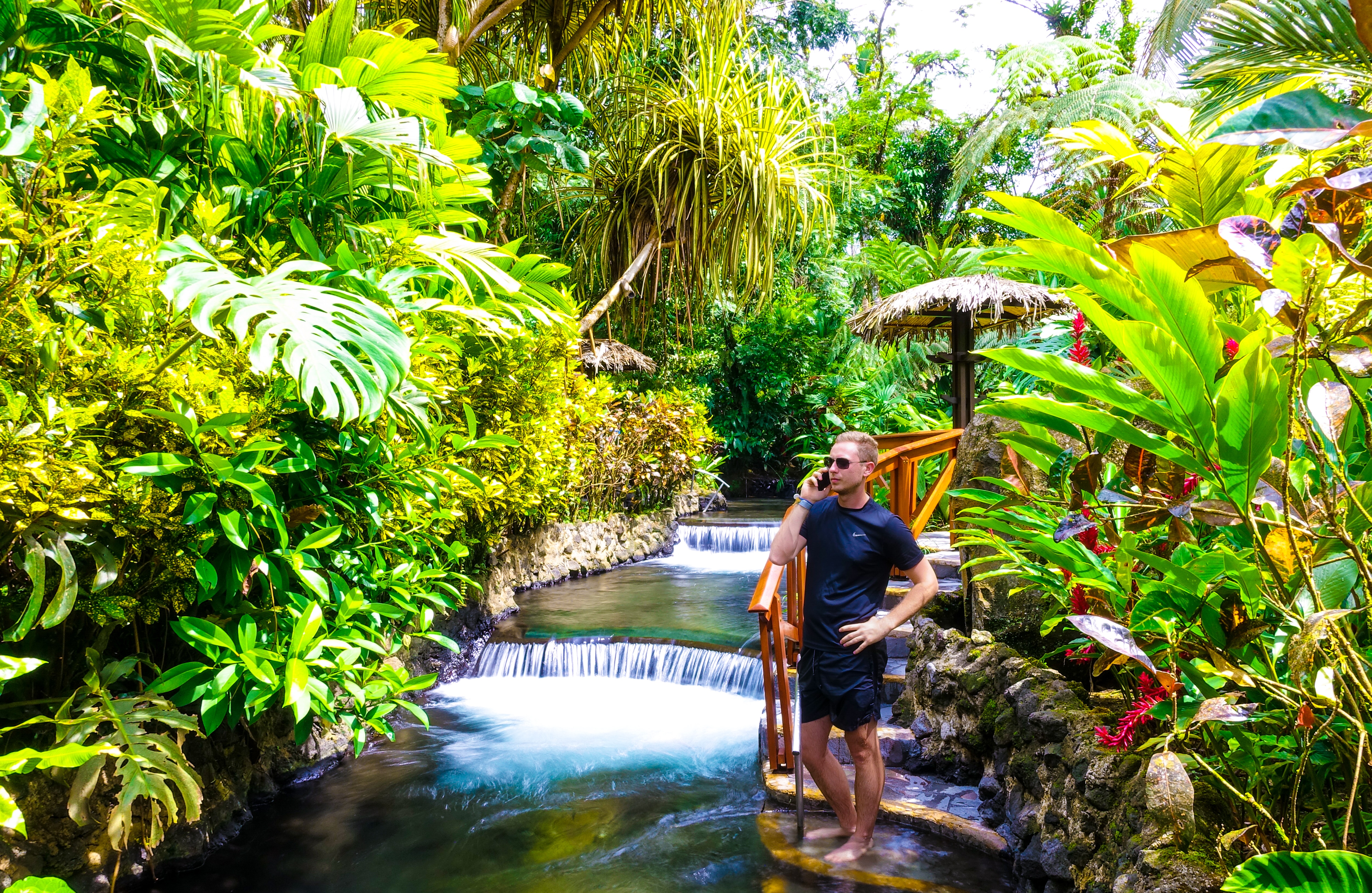
Climate and Geography
Despite its small size – just slightly larger than West Virginia – Costa Rica offers incredible geographic diversity. Climate varies significantly across the country’s landscapes.
General Climate
Overall, Costa Rica’s tropical climate stays consistently warm. Average yearly temperatures range from 70s to 80s Fahrenheit thanks to the country’s position just north of the equator. Humidity levels vary greatly based on altitude and precipitation.
The country experiences just two seasons:
Dry Season (December to April) – Sunny and warm days with cooler evenings. Greener landscapes, minimal rain chances. Prime high season for tourism.
Rainy Season (May to November) – Increased rain especially in mornings/evenings. Can still enjoy plenty of sunny days mixed with brief downpours. Lush, vibrant vegetation and fewer tourists.
Regional Differences
Climate conditions can fluctuate based on the varied geography across Costa Rica’s regions:
Central Valley – Springlike weather year round at around 70-80F. Comfortable humidity with periodic showers.
Northwest Pacific – Very warm and humid year round with lots of sun. Temps in high 80s. Heavy rains common.
South Pacific – Consistently warm and high humidity. Frequent showers with seasonal monsoons. 80-90F.
Caribbean Coast – Steady tropical climate in 80s. Funneled rain makes this the wettest, most humid region.
Northern Plains – Hot and humid at lower altitudes, cooling substantially up in the mountains. Low 90F summer highs.
Arenal – With mountainous elevation and rain shadows, enjoy cooler averages of 75F and moderate humidity.
Microclimates
Even within the above zones, hyperlocal conditions in valleys, plateaus, and along hillsides create “microclimates”. Neighboring towns can have slightly different average temps. Luckily pleasant weather prevails across most the country.
Costa Rica’s Provinces and Major Cities
Costa Rica contains 7 provinces, each with a unique character and appeal for expats. The most populous cities offer urban conveniences alongside Tico culture.
San Jose Province
This central region contains the capital city along with surrounding metropolitan suburbs like Escazu and Santa Ana. Urban amenities combined with mountainous topography an hour from both coasts.
San Jose – The capital and largest city. Find museums, shopping, nightlife and healthcare amidst lively urban energy. Pollution and traffic are downsides.
Escazu – Fashionable suburbs in the hills above San Jose. Upscale shopping and trendy restaurants.
Atenas – Charming agricultural town with a friendly expat community. Quaint and affordable.
Cartago – Colonial architecture and rich history with Volcan Irazu nearby. Cool mountain climate.
Guanacaste
Known for surfing, beach resorts, cowboys, and conservation, Guanacaste stretches along the northwest Pacific coast down to the Nicoya Peninsula.
Liberia – Fast growing hub with an international airport. Close to beaches and resort developments.
Tamarindo – Former sleepy fishing village turned tourist hotspot with nightlife, food, and great surfing.
Nosara – Laidback surf town and yoga mecca with stunning beaches and([(08 reserves. Artsy, mystical vibe.
Puntarenas
Encompasses central Pacific coast best known for beach destinations like Jaco along with inland region around Lake Arenal.
Puntarenas – Historic port city also popular for fishing and water sports. Urban amenities meet laidback coastal living.
Jaco – Popular surfing, party, and adventure travel destination. Has abundant dining and lodging options.
Monteverde – Misty mountain reserve famed for wildlife and zip-lining across cloud forests. Charming mountain town.
Limon
Running along the entire Caribbean coast, Limon offers an Afro-Caribbean flare, amazing beaches, and lush rainforests.
Puerto Limon – Gritty port town with West Indian cultural influences. Jumping off point for exploring the coast.
Cahuita – Chilled out beach village surrounded by national parks teeming with sloths, monkeys, and exotic birds.
Puerto Viejo – Former sleepy fishing village now thriving as a surfing and yoga destination. Great beaches, nightlife, and diversity.
Alajuela
Volcanic Central Valley landscapes dotted with farms and small towns. Close to the international airport.
Alajuela – Lively working class hub neighboring the airport. Known for charming parks and historic architecture.
La Fortuna – High adventure basecamp beneath impressive Arenal Volcano. Tours, hot springs, ziplining await.
Nuevo Arenal – Lakefront community offering water sports, microbreweries, and stunning sunsets across Lake Arenal.
Cartago
Agricultural breadbasket peppered with colonial towns surrounding the former capital city.
Cartago – Lovely parks and gardens with Spanish-style architecture in downtown. Close proximity to San Jose.
Turrialba – Rural farms meet adventure tourism. Rappelling, rafting, kayaking and more against a volcano backdrop.
South Pacific
The least visited coast has remained authentic and undeveloped. Rainforests, beaches, wildlife, waterfalls, and laidback communities.
Dominical – Bohemian coastal village with a lively surf and yoga scene. Nature lovers paradise.
Ojochal – Picturesque community of French Canadian expats. Offering ocean views, jungle foliage, and gourmet fare.
San Vito – Charming mountain town and growing expat haven. Close to the borders of Panama.
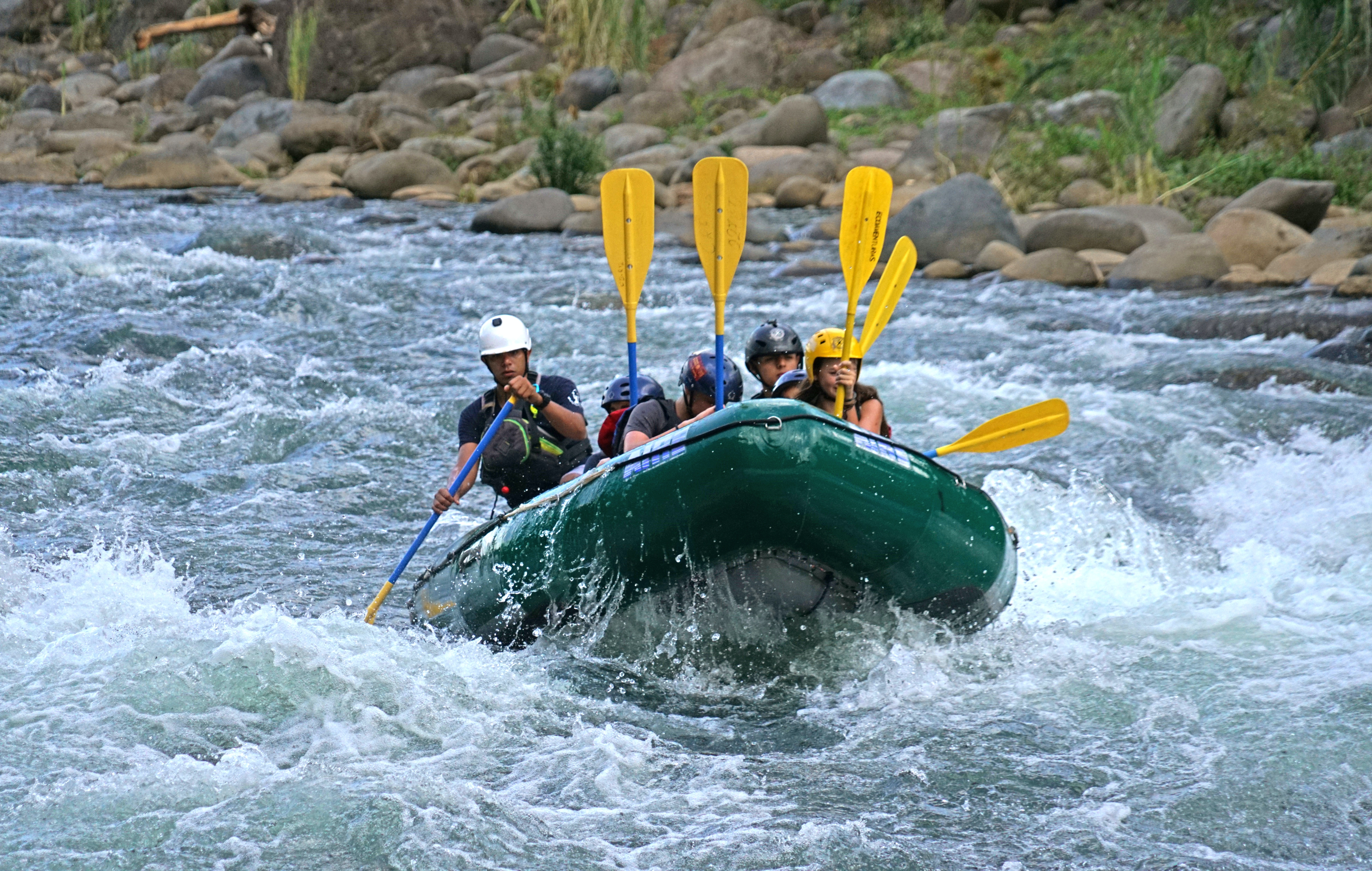
Top Activities for Retirees in Costa Rica
What’s so appealing about living full-time in Costa Rica? The endless opportunities for adventure, nature, enrichment, socializing, and just plain fun! Popular retiree activities include:
Beaching
With over 800 miles of coastline touching both the Pacific and Caribbean, superb beaches are never far. Sunbathe, boogie board, build sandcastles, collect shells, or just relax oceanside.
Birdwatching
Costa Rica’s incredible biodiversity includes over 900 identified bird species. Try spotting the iconic scarlet macaw, great green macaw, keel-billed toucan, or resplendent quetzal.
Boating
Sail, kayak, charter a sportfishing boat, take a sunset cruise, join a paddleboarding group, or sign up for whitewater rafting. The water options are endless.
Dining
Indulge your inner foodie at local sodas for $5 casados then fine dining venues offering Pacific Rim fusion. In between are endless cafes, markets, and bars to try.
Fishing
Reel in impressive sailfish, marlin, mahi-mahi, tarpon, and snook with experienced local captains. Lakes and rivers offer bass, trout, and tilapia.
Gardening
Growing orchids, tropical fruits, herbs, cacao, coffee and more thrives in Costa Rica’s fertile volcanic soil and ideal climate.
Golfing
Challenging courses designed by legends like Arnold Palmer and Pete Dye cater to golfers. Very affordable rates make it easy to play regularly.
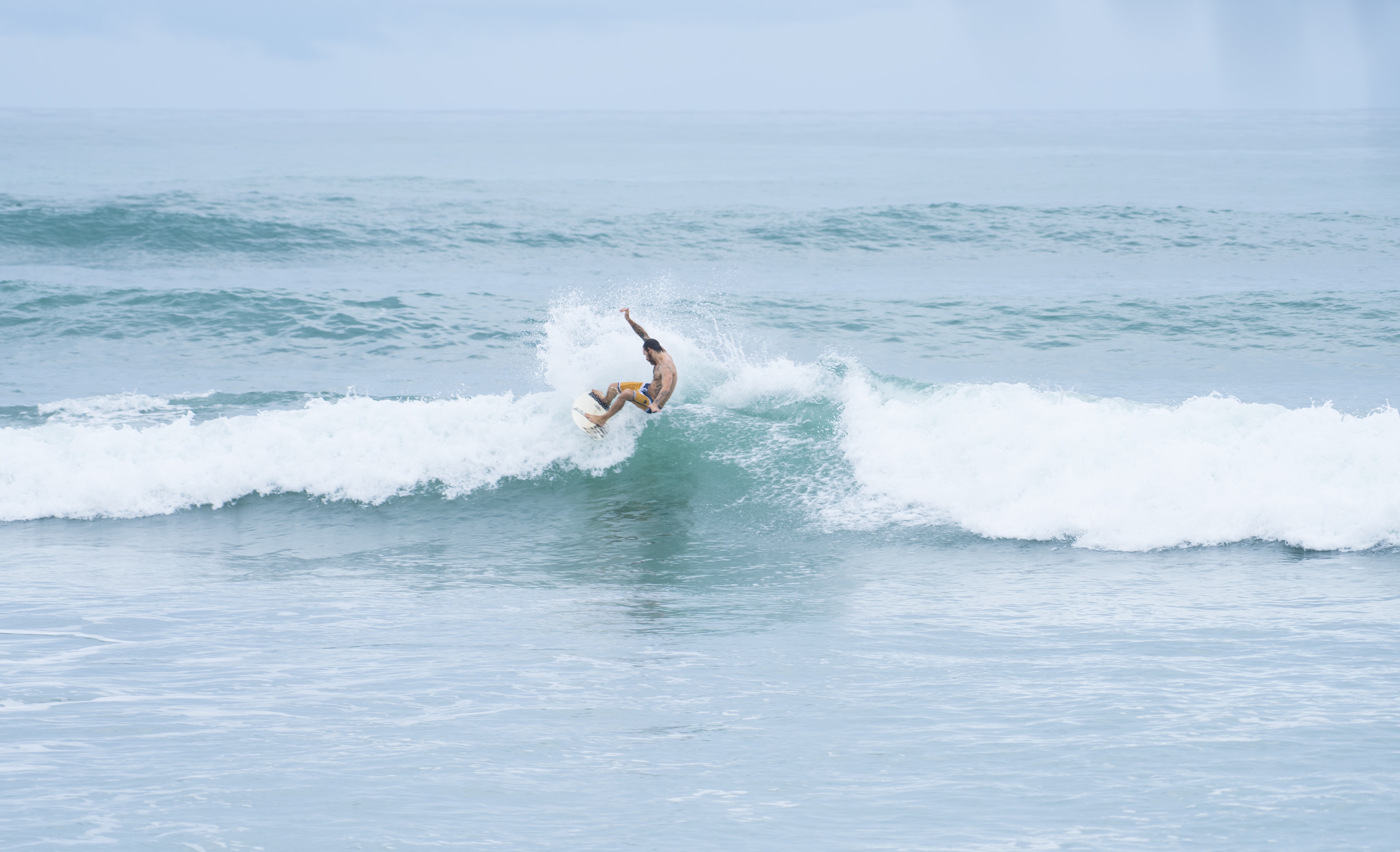
Health Activities
Yoga, tai-chi, Gyrokinesis, tango, Zumba, spinning, strength training – staying active is part of the lifestyle.
Horseback Riding
See the countryside from horseback riding along beaches and through the rainforest to waterfalls. Ride through rustic communities or scenic valleys.
Live Music/Dancing
Whether its chill bars with acoustic sets or Cuban dancehalls with big bands, music is integral to cultural life.
Photography
Capture extraordinary images of landscapes, wildlife, people, cityscapes, abstract patterns – Costa Rica is a photographer’s dream.
Surfing
On the Pacific get soaked riding waves at beginner spots like Jaco or challenge world class breaks at Pavones. Paddleboarding also abounds.
Volunteering
Use your skills to help kids, animals, environment through excellent local organizations that assist vulnerable communities.
Wildlife Viewing
Spot playful monkeys, colorful frogs, soaring toucans, slumbering sloths, breaching whales, nesting sea turtles and other exotic creatures in their natural habitats.
Zip Lining
Fly through the rainforest canopy for a rush of adrenaline. Courses range from family friendly to hardcore mile long zips and rappels.
The variety across Costa Rica makes finding activities suited to your abilities and interests easy and affordable. The emphasis on living simply and joyfully encourages you to pursue what you love.
When to Retire in Costa Rica?
Costa Rica’s consistent tropical climate makes any time of year pleasant to retire abroad. But seasons, holidays, and your preference for weather or crowds may guide the ideal timing.
Dry Season (December-April)
The sunny dry season attracts the most tourists and expats. Gated communities fill up, tour operators are busy, but sunny beach days and rainforest adventures abound. Prices increase. Holidays like Christmas and Easter have lively celebrations. January offers perfect temps countrywide.
Rainy Season (May-November)
If you prefer quieter villages, lower lodging costs, and less crowded destinations, target moving during the greener rainy season. You’ll still enjoy sun between brief storms. May offers ideal weather on both coasts before the rainfall increases. September-October brings prime turtle nesting season.
Retiring Year Round
Some retirees split the year with summers back home and winters down south. Others take advantage of consistent pleasant weather and activities to remain year round. With strategic trips back “home” for visits, you can essentially retire full time to your slice of paradise.
Figure out your preferences on weather, crowds, holidays, and community before deciding on timing. Being flexible across Costa Rica’s microclimates and regions means you can always find great conditions somewhere.
Steps for Preparing To Retire in Costa Rica
Meticulous preparation will ensure your retirement abroad goes smoothly. Vital steps for getting ready include:
Exploratory Trips – Take several extended trips to experience day to day living across different towns. Rent apartments. Open local bank accounts. Vet healthcare providers. Test run transportation options. Ensure Costa Rica is right for you.
Visas – Research which retirement residency program suits your situation – pensionado, rentista etc. Hire an attorney to advise and assist with proper documentation and applications.
Ship Goods – Use only established international shippers/freight companies. Time shipments to arrive after you obtain residency permits to avoid steep duties. Pack essentials to bridge any delays.
Learn Spanish – Build foundations in Spanish vocabulary and grammar. Focus on conversational phrases, travel terms, directions, and transactions to enable basic interactions.
Healthcare – Shop private insurance plans or public CAJA coverage to activate upon arrival. Bring 6 months of prescription medications before obtaining locally.
Finances – Inform your current bank of your move. Set up new accounts with local banks and transfer methods between U.S. accounts. Review taxes.
Housing – Rent for your first year in new towns. Travel light and save major furniture purchases for once you have residency and decide on best area.
Simplify – Bring only essentials. Hold garage sales, donate excess furniture and household goods. Put some items into storage in the U.S.
Budget Realistically – Track current exact spending. Research accurate costs for living abroad including housing, food, utilities, transportation, healthcare. Budget conservatively.
Check off these steps methodically. Rushing into a dramatic life transition without proper preparation risks frustration, disputes, delays, and setbacks. Invest time to research and plan each detail to pave the way for an idyllic retirement.
Best Places to Retire in Costa Rica
Costa Rica offers endless options across vastly different microclimates and landscapes. Choosing the right area aligns with your budget, lifestyle, and interests. Popular retirement spots include:
Central Valley
The lush green Central Valley offers fabulous spring-like weather year round along with stunning mountain views. Charming agricultural towns like Atenas allow affordable living amidst coffee farms and fruit orchards just an hour from San Jose’s urban conveniences.
Lake Arenal
Paradise for nature lovers thanks to pristine Lake Arenal, lush rainforests, impressive views of the volcano, and charming small communities. Enjoy water sports, hiking, birdwatching and hot springs without crowds of tourists. Temperate, comfortable year round climate.
Manuel Antonio/Quepos
On the central Pacific coast, these sister beach towns boast magnificent beaches, exotic wildlife viewing, sportfishing, scuba diving, sailing, and easy access to the acclaimed Manuel Antonio National Park. Lively communities with restaurants, nightlife, amenities, and great weather.
Nosara
For an incredible surfing, yoga focused, and creative expat community, head to the hippy chic beaches of Nosara on the Nicoya Peninsula. Miles of stunning beaches, tropical wildlife, and cutting edge amenities exist alongside the communal village vibe.
Southern Zone
The lesser visited South Pacific region features secluded rainforests, rushing rivers, hot springs, thundering waterfalls, and laidback communities like San Vito and Ojochal. Live affordably immersed in authentic Tico culture and pristine nature far from tourist crowds.
Jaco
Just 1.5 hours from the capital, Jaco offers an appealing beach town with plenty of dining, nightlife, recreation, and foreign amenities alongside pura vida culture. Ideal for retirees who want an established community without isolating remoteness.

Healthcare Options in Costa Rica
Understanding Costa Rica’s healthcare system provides peace of mind. Top options include:
Public CAJA – Affordable government clinics and hospitals funded by payroll taxes. Excellent for routine care but long waits for procedures. Only available to legal residents.
Private Doctors/Clinics – For quicker, higher quality care most expats use private doctors and outpatient clinics. Appointments are affordable ($50 average visit). Specialists are abundant.
Private Health Insurance – Required for residency. Companies like INS and BlueCross BlueShield offer plans starting around $150/month with low deductibles to minimize out of pocket costs.
Public Hospitals – For surgery, serious illness, or major procedures, public hospitals offer quality care at a fraction of U.S. prices even without insurance.
Pharmacies – Name brand and generic prescriptions are sold over the counter at reasonable costs countrywide. Convenient and accessible.
Dental/Vision Care – With or without insurance, exams, lenses, dental work cost 60-75% less than U.S. prices. Facilities specifically cater to North American patients.
Talk to expats locally and consider retaining U.S. coverage like Medicare for greater choice. Combine public low costs, private quality, and U.S. benefits to optimize health overseas.
Expat Community Life in Costa Rica
One major advantage Costa Rica offers is established expat communities across the country. The thriving foreign retiree presence enables wonderful built-in social lives, activities, support, and friendships. Great ways to connect include:
Organized Community Activities
Many developments, town associations, and expat groups organize events like holiday parties, meetups, sporting events, concerts, game nights, lectures, dancing, and more. Search sites like Meetup.com for groups matching your interests.
Volunteering
Give back to the local community by volunteering at schools, animal shelters, conservation efforts, or community organizations. This creates purpose and friendship with locals.
Cultural Integration
Practice speaking Spanish, take dance lessons like salsa or bachata, attend festivals and events, shop at farmers markets, and patronize local sodas to integrate into the rich culture.
Recreational Clubs
Stay active by joining local golf groups, bowling leagues, tennis clubs, hiking groups, cycling clubs, aquatics teams, bridge clubs and more. Great way to pursue hobbies while meeting new friends.
Religious Congregations
Places of worship provide community as well as spiritual enrichment. Catholicism dominates but many churches offer services in English.
Expat Groups on Social Media
Discuss tips, seek advice, find referrals, and make connections by joining groups like “Expats in Costa Rica” on Facebook or subreddits like r/costa_rica_expats.
Having an established network provides invaluable social connections and support navigating life abroad. The thriving expat communities ensure wonderful built-in social lives. Costa Rica makes it easy to find your niche.
Frequently Asked Questions
Currently top destinations include Central Valley towns like Atenas and Grecia, beach communities like Tamarindo and Puerto Viejo, upscale areas like Escazú, and planned developments around Lake Arenal.
In 2023, plan on budgeting $2,000 – $4,000 per month as a retiree couple. Housing, healthcare, tourist activities, and imported items drive up costs. Remote areas cost much less. Create detailed projections based on your needs.
Common retirement visas are the pensionado, rentista, or inversionista. Work with an attorney to apply 6-12 months pre-move, providing background checks, medical exams, proof of income, and more.
Shipping household goods and importing cars involves paperwork but is very feasible. Hire a relocation service to handle customs details. Drive through Mexico or ship early to avoid delays.
Learning Spanish is highly advisable to comfortably navigate healthcare, residency, shopping, and daily interactions. Take lessons before and after moving. Even basic skills will make your transition far easier.
Costa Rica’s healthcare system is highly regarded and offers both public and private options. Many doctors and medical professionals have trained in the U.S. or Europe. While the public system is affordable, the private system offers faster service and is still cost-effective compared to U.S. prices.
Costa Rica does not tax foreign income, which is beneficial for retirees. However, it’s essential to understand both Costa Rican and U.S. tax obligations, especially if you have assets or income in both countries.
The real estate market offers a range of options, from beachfront condos to mountain villas. Prices vary based on location and amenities. It’s crucial to work with a reputable real estate agent and lawyer when considering a purchase.
The “Pura Vida” lifestyle is more relaxed, and family is central to Costa Rican culture. While locals are generally welcoming, understanding local customs and participating in community events can enhance the expat experience.
While many retirees opt to have a car, Costa Rica offers a reliable public transportation system, including buses and taxis. In urban areas, ride-sharing services are also available. However, road conditions can vary, especially in more remote regions.

